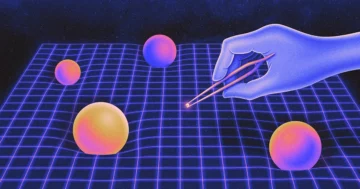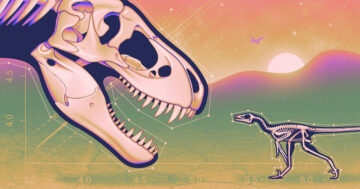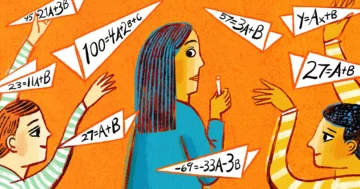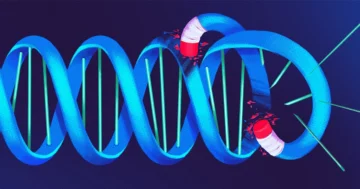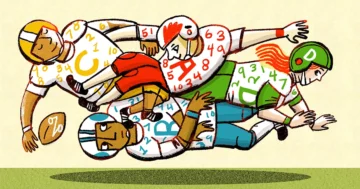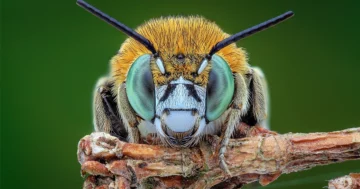Introduction
Thousands of miles from home in the steamy Amazon rainforest in the mid-1800s, the British naturalist Henry Walter Bates had a problem. More than one, really; there were thumb-size biting insects, the ever-present threat of malaria, venomous snakes, and mold and mildew that threatened to overtake his precious specimens before they could be shipped back to England. But the nagging scientific problem that bothered him involved butterflies.
Bates had noticed that some of the brightly colored Heliconius butterflies in the forest didn’t flit about like the rest; they moved more slowly. When he captured them and examined them under his makeshift microscope, he discovered that they weren’t really Heliconius at all, but astonishing look-alikes from unrelated families of butterflies.
By the time Bates’ discovery reached the scientific cognoscenti in England, Charles Darwin’s then-new proposal of natural selection could explain why this brilliant mimicry occurred. Birds and other predators avoid Heliconius butterflies because they are toxic to eat, with a bitter taste. The mimics were not toxic, but because they looked so much like the foul-tasting Heliconius, they were less likely to be eaten. The closer the resemblance, the more potent the protection.
What Bates and many later evolutionary biologists couldn’t explain was how this mimicry was possible. Getting the right shades of aquamarine and fiery orange in the right places on the wings required a constellation of precisely tuned genes. Those traits would have to be inherited with perfect fidelity, generation after generation, to preserve the Heliconius disguise. Maybe real Heliconius butterflies could afford to deviate a bit in coloration because their toxins could still teach predators to stay away in the future, but the mimics needed to be consistently flawless replicas. Yet the random reshuffling and remixing of traits in sexual reproduction should have quickly disrupted the essential coloring patterns.
Introduction
Today we know that in many species the answer is supergenes — stretches of DNA that lock several genes together into a single inheritable unit. “They’re kind of a wild card,” said Marte Sodeland, a molecular ecologist at the University of Agder in Norway. This aggregated form of inheritance “has obvious advantages, because it allows rapid adaptation, but there’s a lot we don’t know yet.”
Supergenes once seemed like an evolutionary oddity, but the rise of genetic sequencing has shown that they are far more common than researchers believed. Not all supergenes may serve a function, but work in just the past few years has revealed that traits in a wide range of animal and plant species might be driven by these groups of genes that function like a single gene. Supergenes help wild sunflowers adapt to a range of environments, such as sand dunes, coastal plains and barrier islands. In other families of plants, they produce subtle but important variations in their sexual organs and fertility that help to prevent inbreeding. Research published last spring showed that in some fire ant species, supergenes determine which type of social organization predominates — whether a colony has a single breeding queen or more than one, or whether it produces more males or females. (Specific supergenes in humans haven’t been confirmed but likely candidates have been found.)
Supergenes also seem to hold explanations for many long-standing mysteries of evolution, such as how species can sometimes adapt to new environments rapidly, how populations can sometimes evolve in different directions even while living close together, and why some species have “balanced lethal systems” of breeding, such that they must have two different versions of a chromosome to survive.
Introduction
But supergenes aren’t all-powerful. Recent work on the evolution of supergenes is painting a nuanced picture of their effects. These theoretical models and studies of real populations have shown that supergenes often accumulate harmful mutations far more rapidly than other pieces of DNA do, and this can gradually lead to degenerative effects that undermine the original benefits.
Separating the Genetic Laundry
The definition of a supergene is rather technical, and scientists still argue about its finer points even though the concept has been around since the 1930s. But at its simplest level, says Simon Martin, an evolutionary biologist at the University of Edinburgh, a supergene is a group of genes that are inherited together as a unit, often with a lot of other noncoding DNA.
“You can continue to produce two distinct traits with multiple genes and not worry about them becoming jumbled up,” Martin said.
That jumbling often occurs during the production of egg cells and sperm. In that process, the maternal and paternal copies of chromosomes line up and randomly swap segments of DNA in a ballet called recombination. Recombination hedges nature’s bets about the value of different permutations of genes; it boosts genetic diversity and helps weed out harmful mutations.
The superpower of supergenes is that they block this. Typically, supergenes contain DNA deletions, insertions or inversions (sequences that were cut out and spliced in backward). As a result, those parts of the chromosomal DNA don’t align with a partner and are far less likely to recombine.
In the 1970s, researchers showed that this same mechanism — with misalignments in chromosomes blocking recombination in segments of chromosomes that then continue to lose genes — led to the evolution of Y sex chromosomes from X chromosomes in mammals. Sex chromosomes are essentially supergenes run amok. Both supergenes and sex chromosomes exist because there’s sometimes a benefit to having some sets of genes inherited together, says Deborah Charlesworth, one of the evolutionary geneticists who pioneered the sex chromosome studies and recently retired the University of Edinburgh. In those cases, “it would be ideal to not have any recombination but to have the things that go well together stuck together for good,” she said.
To understand why that might be advantageous, think about doing laundry, says Emma Berdan, an evolutionary biologist at the University of Gothenburg in Sweden. Say you have a basket of white towels and a basket of red towels. Recombination does the equivalent of tossing both loads into the same drum, flipping on the hot water, and pressing start. What results is a bunch of pink towels. But the evolutionary equivalent of pink towels often isn’t a problem, Berdan says: A blending of traits can be beneficial.
Sometimes, though, life benefits from keeping its genetic laundry separated. For Bates’ Heliconius butterfly mimics, having a mix of color splashes from different genes could be disastrous. The butterflies only reap the reward of mimicry if they look enough like Heliconius to fool predators.
Introduction
That’s why many researchers have been probing how supergenes arise and what the consequences for species might be as their supergenes continue to evolve. Understanding the origin of a supergene is “one of the most challenging questions,” said Tanja Slotte , an evolutionary geneticist at Stockholm University who studies supergenes in plants. “And it’s not a given that it’s even always possible.”
In one recent effort, Katie Lotterhos, an evolutionary marine biologist at Northeastern University, built a computer model to study the first tentative steps taken on the path from inversion to supergene. Her model, published in the Philosophical Transactions of the Royal Society B in August as part of a special issue on supergenes, showed that the larger the initial DNA flip-flop, the more likely a supergene was to evolve. The reason was simple: A larger inverted fragment of DNA was more likely to capture multiple genes and lock them together as a single entity. Any beneficial mutations arising within the inversion could then promote its spread as a supergene.
But the more important insight from Lotterhos’ model was that inversions themselves do not necessarily provide an evolutionary advantage. If a suite of genes is already well adapted to its surroundings, locking it into an inversion will not suddenly allow it to take off as a supergene. That fact may help to explain why complex vital traits aren’t routinely secured as supergenes: Ordinary selection pressures are often sufficient to preserve the traits.
The question of whether an adaptation precedes an inversion or vice versa, Lotterhos realized, might never be answerable. “What comes first, the inversion or the adaptation?” she said. “It’s probably a little bit of both.”
The Cost of Supergenes
Supergenes offer robust advantages in the inheritance of adaptive traits, but they come at a cost.
Think back to Berdan’s laundry analogy: Washing red and white towels in a single load does eliminate the color differences between the two sets of linens. However, if you rip or stain a pink towel, you have an identical pink towel you can use as a backup. If one copy of a chromosome picks up a harmful mutation that breaks a gene, a functioning backup copy is likely to be on the matching chromosome to help the organism survive. And since recombination ensures that the mutation is inherited independently of other genes, natural selection can weed out the mutation over time.
For supergenes, however, that isn’t true. Since they rarely recombine, any harmful mutations they acquire tend to stay in place. The benefits of supergenes, then, could be accompanied by significant disadvantages. For example, Berdan and Benjamin Wielstra of the Institute of Biology Leiden have found that in the salamander called the crested newt, half of the eggs it lays aren’t viable because of all the mutations that have built up in one supergene. Their supergenes seem to be holding back their reproductive success.
Introduction
Supergenes can also complicate the process of mating. In some species, supergenes create a breeding system that in effect has four sexes. Because of a supergene in the North American birds called white-throated sparrows, for example, there are two “morphs” with dissimilar coloration and behaviors. Not only do males have to find females, but they must find a partner from the opposing morph. Otherwise, offspring will die either from inheriting supergenes from both parents or from inheriting none. Only chicks that receive a “balanced lethal” inheritance of one supergene and one ordinary segment of chromosome survive.
With such a steep price, it’s a wonder that supergenes evolved at all, Berdan says. “Any set of variants is going to be really hard to maintain, especially over millions of generations,” she said. “That’s one of the big mysteries of supergenes.” She suggested that multiple types of selection might be working together to preserve supergenes, and that certain environments might be most conducive to their persistence in the population.
Ironically, one of the mechanisms that can sometimes preserve supergenes seems to be recombination — the phenomenon that they normally resist. Amanda Larracuente, an evolutionary geneticist at the University of Rochester, and her coauthors described such a case last April in eLife.
Larracuente wasn’t initially interested in supergenes or their evolutionary costs. Her focus was on selfish genes, segments of DNA that proliferate in populations without benefiting their hosts. She was fascinated by a selfish gene called Segregation Distorter (SD) that arose in certain fruit flies in Zambia and skews the sex ratio of their offspring. “It’s a sperm killer,” she explained, but it only kills sperm that doesn’t carry a chromosome with SD.
Sometime within the last 3,000 years, one version of SD ensnared a large piece of chromosomal DNA, creating a supergene known as SD-Mal that spread to fruit fly populations throughout Africa. “It’s really the ultimate selfish gene,” Larracuente said.
DNA sequencing and analysis by Larracuente, Daven Presgraves and their colleagues showed that chromosomes with SD-Mal accumulate harmful mutations, as predicted by the near-complete lack of recombination between SD-Mal and its sister chromosome. But the researchers didn’t find as many mutations as they expected.
The reason, they discovered, is that occasionally a fly will inherit two chromosomes with SD-Mal — and those two supergenes are just similar enough to allow some recombination between them. That recombination in turn makes it possible for a few harmful mutations to be purged from the flies’ supergenes over time.
“As it turns out, just a little bit of recombination is enough,” Larracuente said. She and Presgraves are now looking for other SD supergenes in wild fruit fly populations for clues to the evolution and impacts of supergenes more generally.
Their results show that the purifying effects of recombination on genomes never cease to be important. The complex traits that the stable, predictable inheritance of supergenes makes possible may be invaluable in helping species adapt, but even the supergenes can benefit from mixing things up once in a while.


